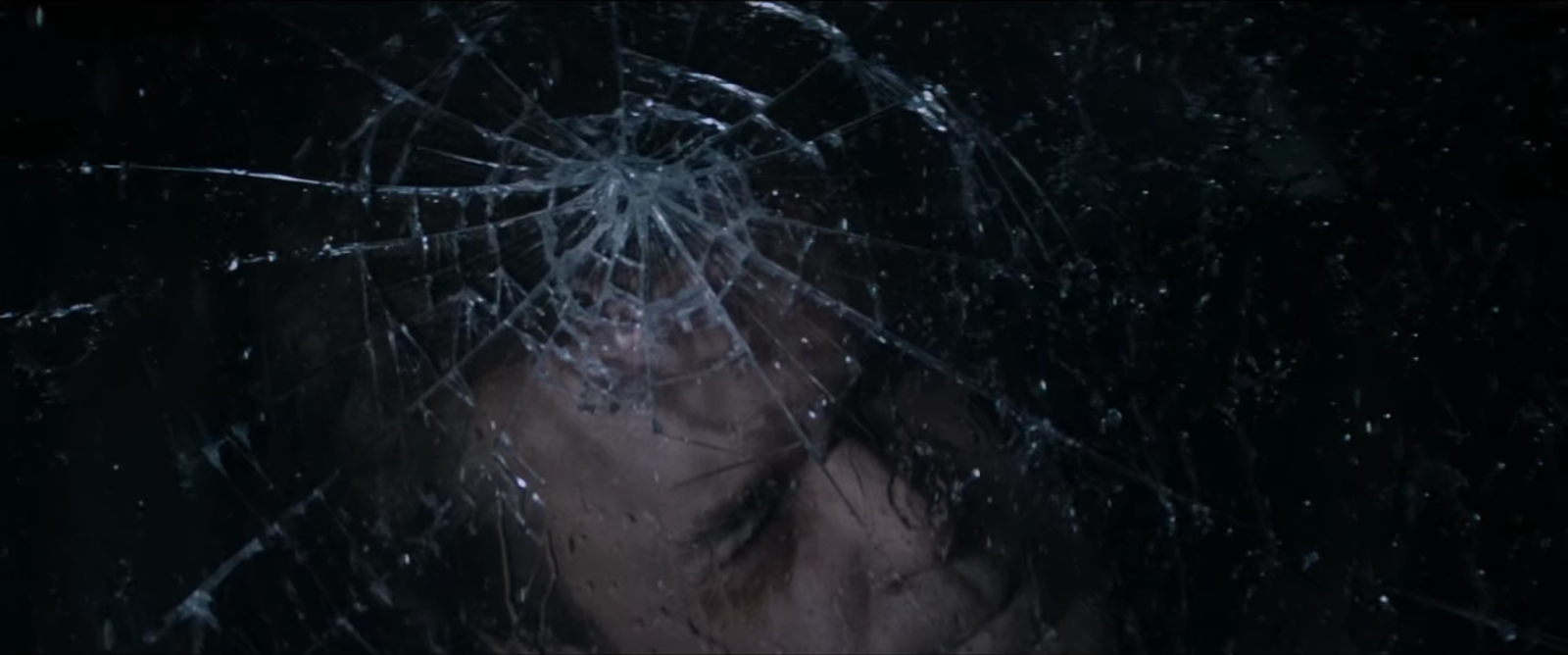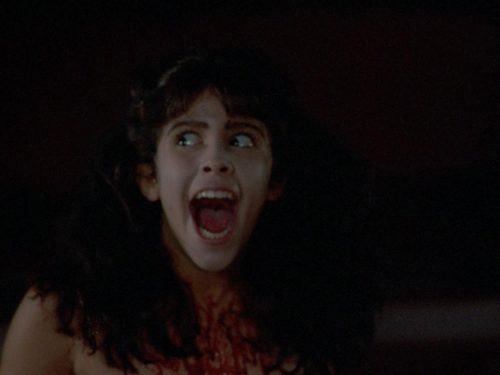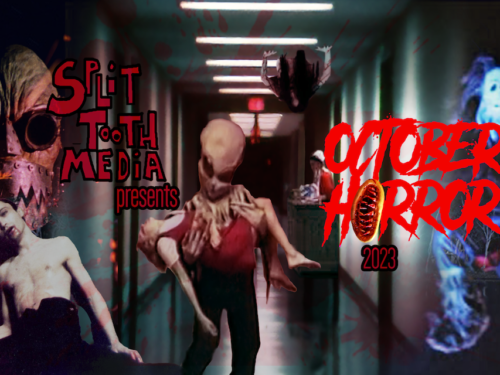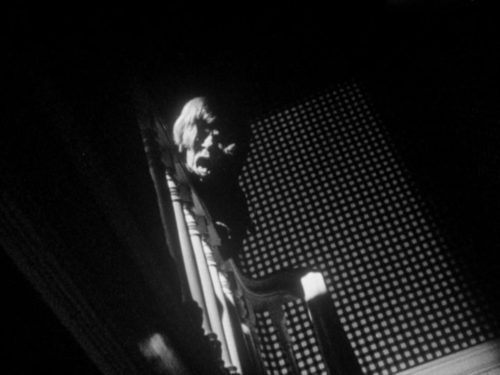With radical obviousness, the nihilism at the heart of Killing Them Softly has arguably been validated and replenished over the tumultuous last decade
No one cares about CinemaScore, except for the Fs. The Las Vegas-based company surveys moviegoers on opening night as they are exiting the theater and asks them, on the spot, to assign the movie they just saw a letter grade. The result is more a damning psychological portrait of the casual movie enthusiast than any coherent measure of quality. In the strange collection of movies branded with the lowest-possible score on this asinine audience barometer, cinematic abominations sit awkwardly alongside provocative masterworks. The failures are confounding, and there’s little that ties them together, just their power to viscerally irritate audiences in the meat of the bell-curve. The films in this exclusive group with legitimate artistic merit garner the most interest, a rubbernecking fascination with their unanimous rejection. Among them, Greg McLean’s Wolf Creek (2005), Darren Aronofsky’s mother! (2017), Jane Campion’s In the Cut (2003), Steven Soderbergh’s Solaris (2002), and William Friedkin’s Bug (2006).One of the greatest, and most inexplicable, is Andrew Dominik’s lean, supremely cynical anti-noir Killing Them Softly (2012).
Killing Them Softly is a blunt instrument. The film cuts against the grain of its moment in time. And it was a striking left turn in writer/director Andrew Dominik’s limited filmography. Years after his nasty, barbed biopic debut, Chopper (2000), he broke out with his second film, The Assassination of Jesse James by the Coward Robert Ford (2007), an epic, instant classic arthouse Western. Sepia-toned and elegiac — as photographed by Roger Deakins — Jesse James is, as the long-winded title states, a methodical retelling of the final days of the American legend. Jesse James views the genre through a self-reflexive mythic lens, as folklore is written in real time. It strikes a remarkable, paradoxical balance between demystification and widescreen mythologizing, exploiting the generational movie-star presence of Brad Pitt as well as any movie ever has. The eponymous martyr is a vain, larger-than-life outlaw celebrity with an aura that refracts and infects everything and everyone in its vicinity. Killing Them Softly is a much different beast. It’s comparably stylish and rigorous, and skulks in the sandbox of American myth, but it’s economic, nervy, aggressively sour, and disinterested in subtlety. It’s a furious film in the vein of C. Wright Mills or Network (1976). “You’re a cynical bastard,” the Driver (Richard Jenkins) admonishes his associate Jackie Cogan (Pitt, again, this time undercutting his magnetism as a character who’s a bitchy cipher) in a bar in the movie’s final scene. It’s hard not to hear that line as an admission from Dominik that the film’s worldview is uncompromising to a fault.

Dominik hasn’t released a feature film since, retreating into TV, with a couple of taut episodes of Mindhunter, and working closely with Nick Cave, countrymate Warren Ellis, and the rest of The Bad Seeds on the stark, emotionally raw music documentary One More Time with Feeling (2016). Dominik is set to release his first film in a decade later this year, continuing his outsider’s view of American mythos with the lurid, long-in-development adaptation of Joyce Carol Oates’ Marilyn Monroe novel Blonde. As fed up and scolding as Killing Them Softly is, it can’t be said that it’s without a sense of humor. Consider the needle drops. Killing Them Softly literally has a scene where a character shoots up to The Velvet Underground & Nico’s “Heroin.” And its main character, the fixer Jackie, always clad in a black leather jacket, is introduced to the tune of “The Man Comes Around,” from the apex of Johnny Cash’s Rick Rubin/American series/wizened “Man in Black” period. “There’s a man going ’round taking names / And he decides who to free and who to blame,” Cash croaks, and that’s exactly what Jackie does seconds later. And, finally, the end credits of the movie roll to Barrett Strong’s “Money (That’s What I Want),” after Jackie’s infamous, oft-quoted final punchline, “Now fucking pay me,” and the cut to black. The tongue-in-cheek music syncs clear a path for Dominik’s radical obviousness.
Related: The Third Revelation: Paul Thomas Anderson’s The Master (2012)
In its opening seconds, Killing Them Softly has the gall to interpolate the biggest mob picture of them all, feigning a cracked, jaundiced version of The Godfather‘s famous opening line, “I believe in America.” In Francis Ford Coppola’s epic saga, a desperate underling appeals to Vito Corleone with a story about opportunity and tragedy. Killing Them Softly opens with a disembodied, omniscient politician inverting this appeal and speaking to the entire country. Based on the pulp novel Cogan’s Trade by George V. Higgins — known for establishing the Boston noir genre with gritty crime books such as this and The Friends of Eddie Coyle — the movie starts with Frankie (Scoot McNairy), a lowlife hood, grimacing as he walks through a deserted, windswept no-man’s land. Debris whips around him as the soundtrack minces a Barack Obama stump speech from the 2008 presidential campaign, shifting between the roar of the crowd and an ominous drone over the title cards. Chopped and mangled, the hopeful message is reduced to keywords and elliptical abstractions: “America… I say to the people of America… this moment is our chance t– c–… enough… to make of our own lives what we will…”

The plot is barebones, a framework that is designed to be baldly metaphorical. It strips the crime genre elements down to the screws. Killing Them Softly zeroes in on events that are meant to be forgotten, or swiftly overwritten, an arc of systematic erasure to restore the status quo. Johnny “Squirrel” Amato (Vincent Curatola) has an idea for a sure-thing card game stick-up job with a preordained fall guy. The gangster who runs the game, Markie Trattman (Ray Liotta), pulled a similar scam a few years back, so Squirrel assumes that if the game is hit again, all interested parties will blame Markie, he’ll get taken out, and that’ll be that. So he enlists recent parolee Frankie for the robbery. Frankie brings along his sweaty, despicable Aussie prison mate Russell (Ben Mendelsohn), first seen corralling a pack of small dogs for a separate scam he’s running — the first sight gag in a movie with plenty of them. After a false start, the film wastes no time getting to the inciting incident. Like Jesse James, Killing Them Softly hinges on a set-piece heist. The robbery is a masterful sequence, a Coen-esque setup of desperation, quick cash, and faulty logic. Dominik expertly orchestrates the tension by focusing on the comic details — yellow dishwashing gloves and a sawed-off shotgun that is cut too short, with the shells jutting out the barrels — the claustrophobic, fluorescent-lit setting, and the expressions and unpredictable movements of the heavies in the room. Everyone at the two long card tables is a threat, which makes it all the more surprising that the robbery goes down as planned.
But the film charts a course to grim inevitability. The omnipotent “They,” the mobbed-up committee that monitors the racket, dispatch the Driver, a shrewd, lily-livered functionary, who in turn outsources the cleanup job to Jackie. He’s tasked with getting the black market up and running and restoring market confidence. He tracks down Frankie, Russell, and Squirrel, and takes out Markie, too — an unavoidable consequence of public perception. Each hit is both ugly and beautiful, with a different style and rhythm. Take Markie’s, the first, which is stylized in extremis. There has never been a kill like this in cinema. On a rain-slicked road, Jackie instructs his wheelman to pull up alongside Mickey at a red light, and he unloads on him from the backseat. Ketty Lester’s “Love Letters” soundtracks the protracted, romanticized scene of extreme close-ups, indulgent slow motion, and enhanced frame rates, where bullets shatter the driver’s-side window before passing through Mickey’s skull. The bullet-riddled car rolls slowly into the intersection and is hit by oncoming traffic, twice, broken glass exploding through the air and glistening in the reflected streetlights. Squirrel’s and Frankie’s deaths each have their own distinct texture and pace as well — one a taut, orchestrated ambush and the other a sudden, shocking burst of ultraviolence. All are connected by Jackie’s efficiency and penchant for overkill.

Killing Them Softly has a street-level ’70s vibe, with black leather jackets, brutal fistfights, anonymous industrial backdrops, and muscle cars. It’s aggressively monochrome, with a color scheme defined by shadowy nocturnal settings, overcast skies, wood paneling, and beige upholstery. Everything is rain-soaked and desolate. The names of the characters are parodically interchangeable: all the conversations about the trials of Mickey, Jackie, Johnny, Frankie, Markie, and various other one-name hangers-on gives the dialogue a repetitive, hypnotic quality. The film is workmanlike but also has blind alleys and detours. The meetings between Jackie and the Driver form the backbone, with the feel and function of a Greek chorus. They talk in circles, debate the progress, hash out the complications, and move the pawns around the board. The themes of the movie rise to the surface in the Driver’s luxury sedan. The temperature on the streets needs to be taken and regulated, the concerns of the higher ups need to be managed and alleviated, and the flunkies caught in the web need to be dispatched in a way that sends a message. It’s less about justice than it is about public relations. Similarly, James Gandolfini’s entitled, slovenly hitman Mickey is the black heart of the movie, a company man wallowing in the past, consumed with grievances and incapable of focusing on anything outside of himself, especially the task he’s been hired for. He’s gone to seed and he laments the version of himself and the world that has faded beyond grasp. He’s also Jackie’s mirror image; whereas Jackie channels his dissatisfaction into single-minded focus, Mickey is reckless and in the throes of his death wish, indulging every vice in an ongoing act of self-destruction.
Dominik makes the counterintuitive decision to render a moment of peak national hopefulness as a dystopia. Released in 2012, at the start of the second Obama term, the film looks back four years earlier to the inflection point of the 2008 campaign. “This guy wants to tell me we’re living in a community. Don’t make me laugh,” Jackie says in his final kiss-off monologue as he watches Obama’s acceptance speech. Dominik creates a setting that is the antithesis of a community. Dueling McCain and Obama campaign billboards overlook a bombed-out, descimated, nearly lifeless wasteland. As much as this follows an archetypal crime movie plot, it also takes place in a strictly metaphorical space, reflecting an exhausted country with a new storm always on the horizon. We’re made to believe that every car radio, hole-in-the-wall dive, roadside diner, and dingy back room is plugged into current events. We take at face value that the muscle hired to give Markie a beating would be tuned into news of then-Treasury Secretary Henry Paulson announcing the Bush administration’s plan to buy equity stake in the nation’s banks — one ill-advised half-measure paralleled by another.
Related: Gauntlets Of Self-Discovery: Richard Ayoade’s Submarine (2010) and The Double (2013)
When Jackie gets stiffed at the end of the movie, it’s analogous to what Dominik does to the audience. The evocative title, the sharp, badass poster, and the propulsive trailer lean into the surface pleasures of the genre, but Dominik doles them out in counterintuitive ways. The robbery simmers but never boils over, there are long talky stretches that kill the momentum, and the hits are grisly and unsatisfying. Written off at the time, the political subtext of Killing Them Softly is actually woven into the world brilliantly. The barrier between diegetic and non-diegetic sound design is slyly experimental. Speeches and rants are shoehorned into the world at odd angles and they are sonically distorted and manipulated. Snippets of George W. Bush lamenting “widespread loss of confidence” and “the irresponsible actions of some,” or pundits dissecting the policy decisions in response to the financial collapse, emerge at points in the narrative where the words and intentions of the talking heads are reflected in a warped mirror.
The setting is a vacuum that attracts opportunists of all stripes and strata. Transplanting the hard-bitten Boston of Higgin’s paperback to post-Katrina New Orleans, the locale is perversely unrealized, lacking any landmarks, local flavor, or cultural specificity. The city, if it can be called that, is filled with nothing but posturing men trying to punch above their weight. The only woman we see is a brassy prostitute who mouths off to Mickey. Everyone in this wasteland is a transplant: Russell is Australian; Frankie has overt New Englander characteristics, dropping his “R”s and making inexplicable references to Somerville; Jackie, the Driver, and Mickey are there solely on business; and all the hoods embody various factions of outfits taking advantage of a lawless land. Within the new order, an insular code of conduct is written, expectations are set, and everything runs on a fragile equilibrium that is routinely broken then restored through ritualistic violence. The card games getting shut down is cyclical; it’s inevitable that someone with the right combination of ambition and stupidity takes advantage. But the blowback is not strictly proportional. Sometimes it’s chalked up as “just one of those things,” and sometimes you need to make an example. In addition to Dominik’s gestures to vintage ’70s cool — connecting the film’s well-defined place and time to the last global recession — he also highlights Depression-era hits from the ’30s, like Jack Hylton & His Orchestra’s “Life is Just a Bowl of Cherries” and Cliff Edwards’ “It’s Only a Paper Moon.”

After all is said and done, Jackie glides through election-night fireworks to meet the Driver at a bar and collect his paycheck. He starts right in on Obama’s acceptance speech playing on the TV — a bookend. With the benefit of hindsight, the anxiety at the core of the movie is much easier to understand. Killing Them Softly captures the feeling of a nation calcifying; it abstracts a specific moment in time when optimism swept the country and offers a warning about complacency and the groundswell of alienation and hostility, a reactionary critical mass. And it is a warning — a messy blood-letting that was too easily misread and dismissed as itself reactionary. Though derided at the time, the politics coursing through Killing Them Softly, seeping into every location and poisoning each character’s state of mind, feels more accurate now. The film conveys an internalized rage — how a lack of control and the bombardment of misinformation and spin atrophies the mind. The cynicism of Killing Them Softly has proven prescient. “I’m living in America, and in America, you’re on your own,” Jackie seethes. “America’s not a country; it’s just a business.” It relishes the bitter irony and ridiculousness of equating the US economy with a mob-run strip-mall card game ring. The oxymoronic idea of “killing softly” is a window into the absurdity and dispassion of this world. The Roberta Flack/Fugees-referencing title is spoken by Jackie in his second meeting with the Driver. Contempt masquerades as compassion; mercy is really pity. Policy is not about fixing a problem, or improving people’s wellbeing, but controlling the narrative. The nihilism at the heart of the film has been arguably validated and replenished by a tumultuous decade. In short order, Killing Them Softly’s stock has risen dramatically.
Stream Killing Them Softly on Amazon Prime
Stay up to date with all things Split Tooth Media
(Split Tooth may earn a commission from purchases made through affiliate links on our site.)




